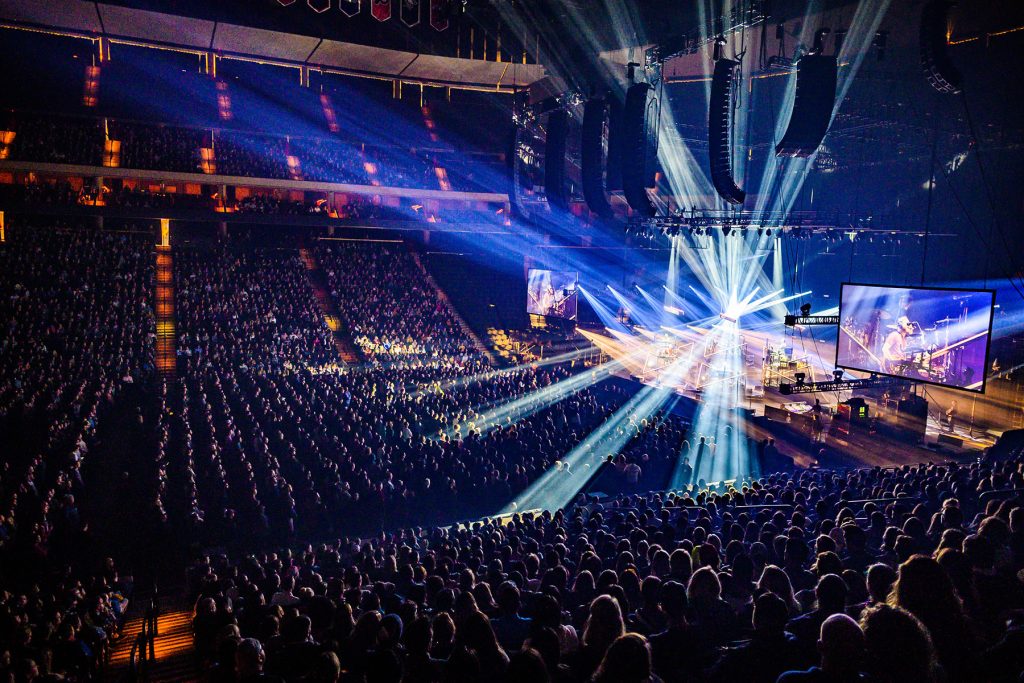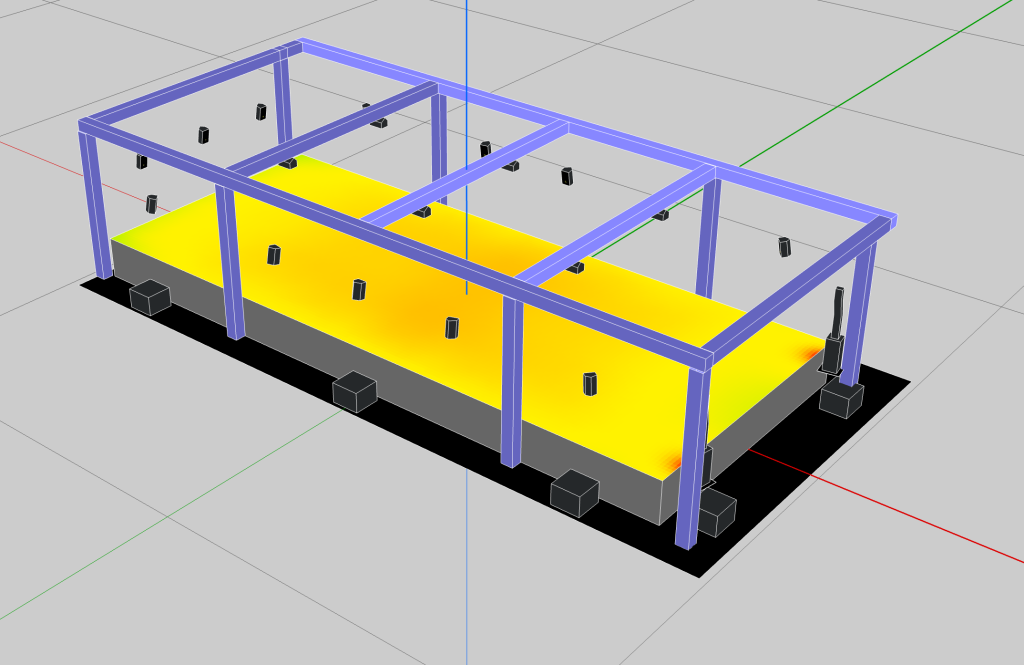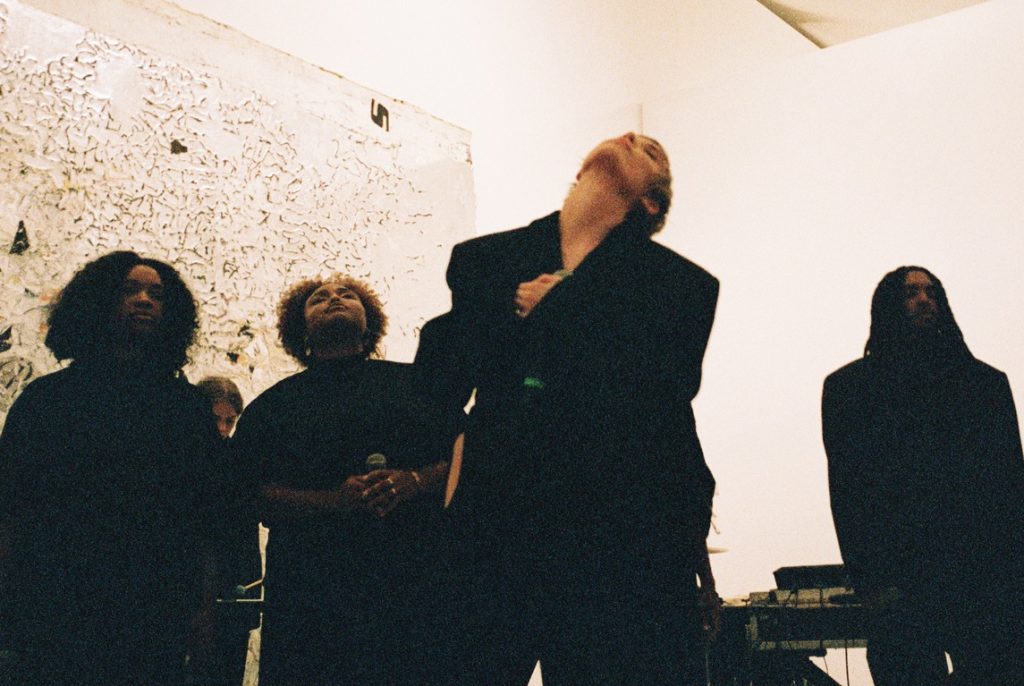Understanding the Accurate Sound Placement of Spatial Audio Company L-Acoustics
From immersive museum performances to concerts in outdoor arenas, this ultra-high-resolution system purports to be the future of sound

A live performance—especially when it’s an arena-scale show—can over-deliver on audience enthusiasm but fall short on sound design. In fact, most people who frequent concerts have experienced disappointing audio delivery regardless of venue size. This doesn’t have much to do with the performer or even the engineers; a lot of the time, it’s simply the system. To deliver album-quality sound at live events, both intimate and epic, premium sound pioneer L-Acoustics developed a spatial-audio system known as L-ISA that changes the way sound flows into a space.
“One of the overarching goals for L-ISA was to establish a connection between the artist and audience,” Jordan Tani, the audio powerhouse’s product and technology marketing engineer, tells COOL HUNTING. “When you go to a small jazz concert or a classic recital—anything like that—wherever you are in that room, you could probably close your eyes and point out where the musicians are. You have a deep connection to the sound.”

This begins to falter as venues scale up with sound systems and audio reinforcement technology. “Engineers have to take all of the sounds—vocals and instruments—and process them through a soundboard,” Tani continues. “They all get mixed down. Spatially, you’re taking all of that lush palette and putting it into one focal point. Already, you’re competing for space.”
To compound this, the front-of-house engineers at larger locales tend to sit in the best seat (along with producers and the director), where they receive the optimal sound overlap from stereo systems. In most concerts that are produced in this way, only 5% of the venue is covered in optimized sound. That means 95% of the attendees are left out. “They’re losing part of the sound experience; they’re losing their connection with the artist because they’ve lost the sound spatialization,” Tani continues. With an immersive L-ISA system, the sweet spot of coverage rises to 85% of the venue.

“You are no longer fitting sounds into one central speaker,” Tani explains. There’s also less destructive processing and additional proprietary technologies that enhance it all. Renowned indie-rock act Bon Iver uses a L-ISA system on tour, with an array of speakers arcing outward above frontman Justin Vernon and fellow musicians. “L-ISA is something we’ve been doing for the last couple of years,” Vernon tells us. “We’ve gotten to be on the ground floor of something new. It’s not just two stacks of speakers in a room anymore. Overall, if we were to prioritize what we’re bringing to the people out there, it’s what goes in their ears.”

With crystal clarity, Bon Iver’s live soundscape reveals all the layers within—regardless of the venue size, and whether or not it takes places inside or outside. Regarding reliability and lack of diminished quality in various venues, Tani says that, during touring, “there’s a system engineer that uses a software like Soundvision [another popular L-Acoustics product] to design each PA system because every venue is a different size. They have to do that no matter what, whether it is a stereo system or a L-ISA system.” Using L-ISA, however, means the engineer can drop a pre-programmed sound design plan into the system and modify the shape of the soundscape to fit into the venue. That’s because it is not concerned with a venue’s number of outputs, but with the shape and square footage of the venue itself. This yields an easily customizable sound experience from venue to venue.
Further, to enhance the sound of outdoor venues, L-ISA incorporates a specific technology to envelop listeners. “When we think of outdoor open venues, there are no acoustics,” Tani explains. “There are no hard walls for things to reverberate off of, which is how we feel that we are in a space. L-ISA has a patented room engine which takes into account your loud speaker design, whether it’s just a frontal system or surrounds and overheads. It takes that into consideration and creates a 3D reverb.”

“We have our heritage in pro-audio and live concerts but we are constantly looking for innovation to elevate any sonic experience, no matter where it is in the world,” Tani continues. “That means not just in the biggest venues but some of the smallest, in every kind of field, to give the power of creativity back to people.” A recent application of this is within acclaimed Swedish recording artist Lykke Li’s Ü & EYEYE installation and live performance at The Broad Museum in LA.
Within The Broad’s Oculus Hall, the emotive installation—Li’s first-ever museum project—paired powerful video loops with cocooning multi-channel audio. “We are stepping into the heart chamber, inside my mind, where nothing is linear and memories are always changing, evolving, with healing,” Li tells COOL HUNTING. “It is mostly one step forward, two steps back, so we have programmed the algorithm so it is always different. One video forward, two videos in reverse, into a dark solfeggio cleanse, perhaps three videos reverse, four videos forward and so on. The idea is to keep the audience interested as it is always changing.”

Li’s sound designer, Warren Brown, met with L-Acoustics to discuss the album and its metamorphosis into an exhibition. Central to their conversation was the idea that this needed to be more interesting than a standard album release. Brown download L-ISA’s at-home studio and did all the mixing for The Broad soundscape on his laptop. With L-Acoustics, he was able to design the entire sound system for the venue.

Typically, L-Acoustics’ clients are front-of-house engineers. Now, however, they’re being approached by venue owners, tour managers and even artists themselves who hear how their music changes. It’s been a long time coming and obstacles are many. “You have two ears, so it makes sense to have a stereo PA,” Tani jokes. “There are a lot of traditions and habits that have been inherited over a long time. It takes a while to break that.”
Perhaps L-Acoustics’ greatest asset is not the power of their technology, but its intuitive nature. “Someone can come out with revolutionary technologies that sound amazing, but if they are cumbersome to work with and wrap your head around it, people won’t use it,” Tani says. “It has to integrate into the regular ecosystem but allow you to explore further.” And that is how L-Acoustics intends to help people retrain their brains when designing sound. For that, artists and audiences everywhere benefit.
Hero image of Bon Iver at YouTube Theater, first concert with L-ISA Processor II, Inglewood, California, USA, courtesy of Matthew Benton












